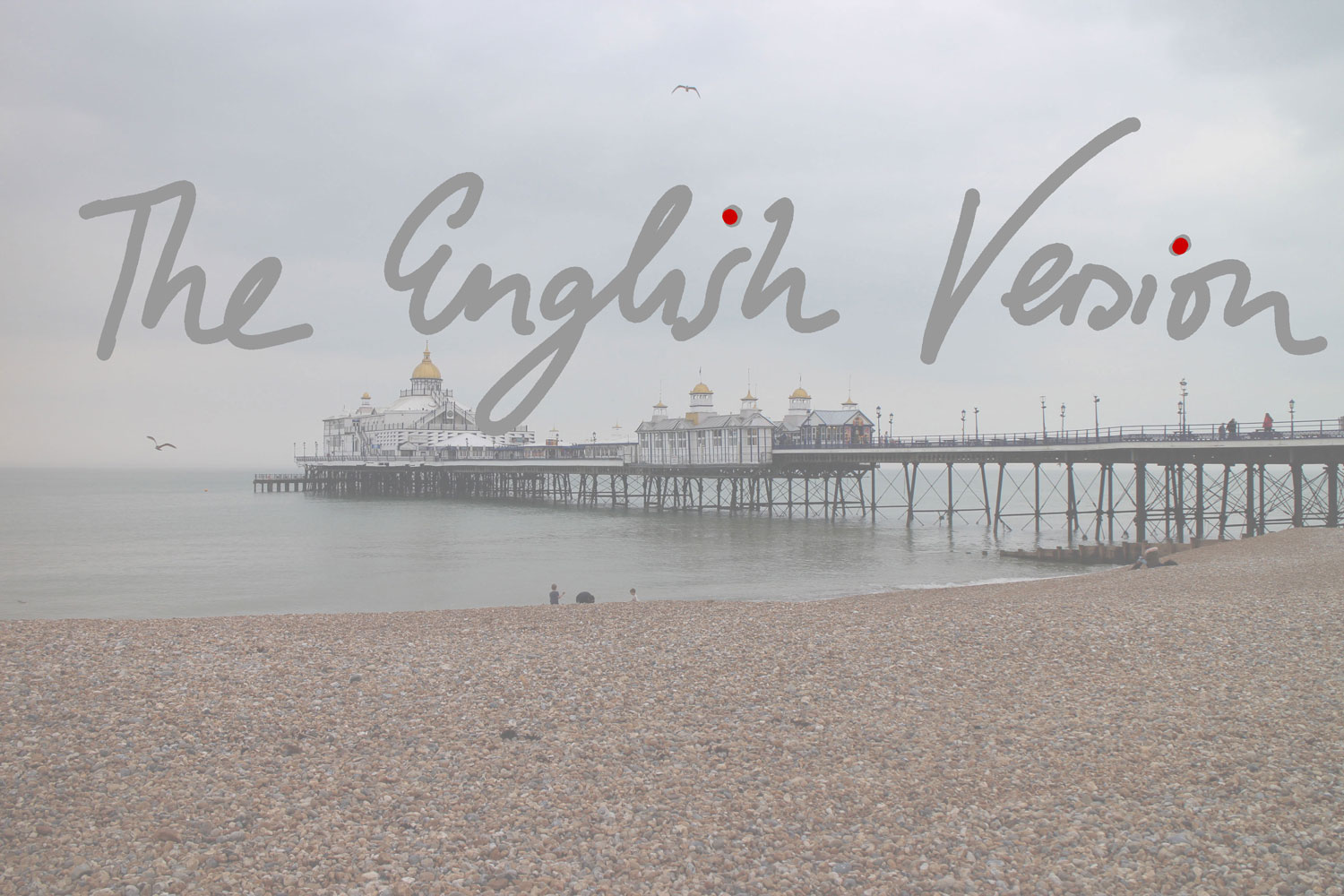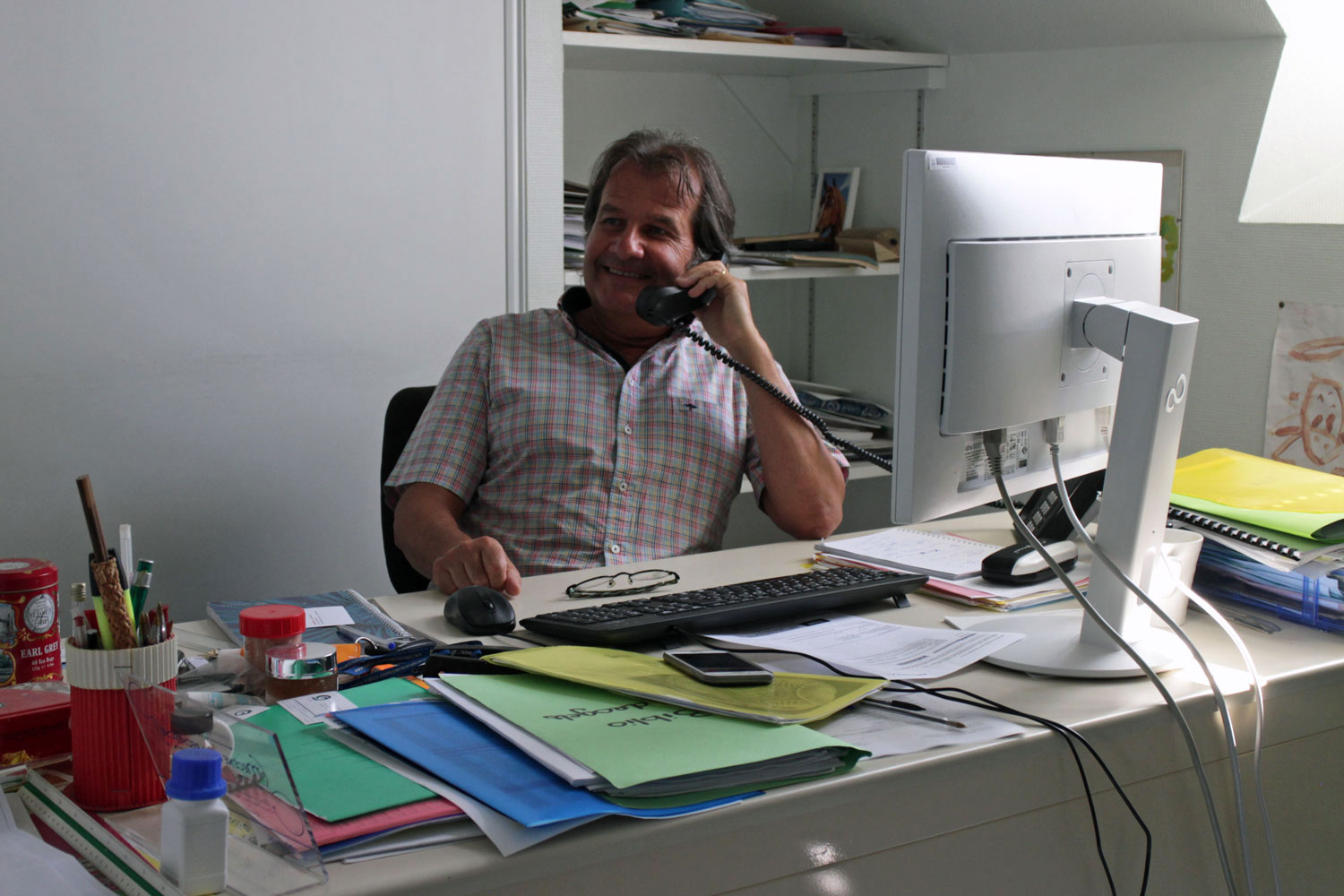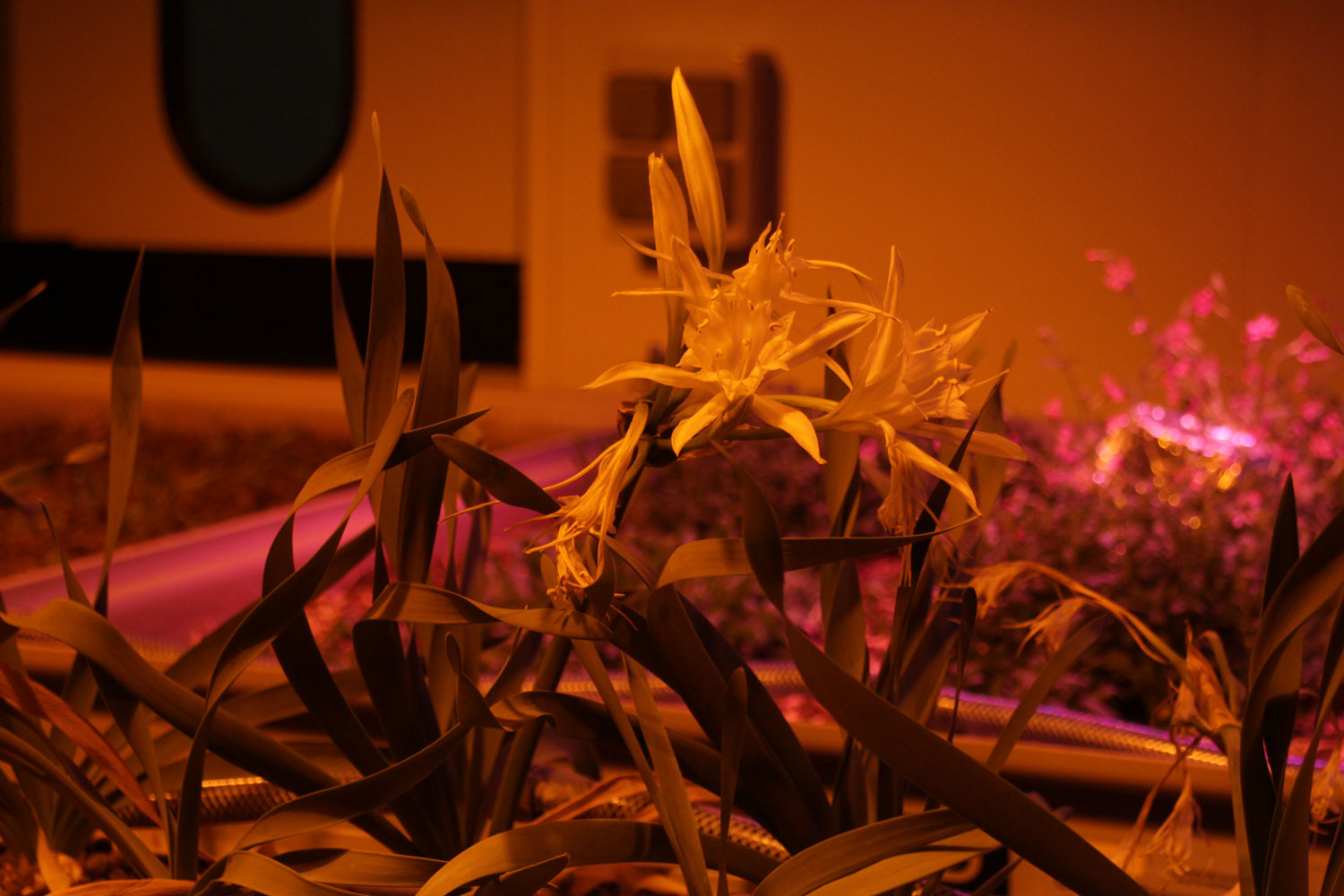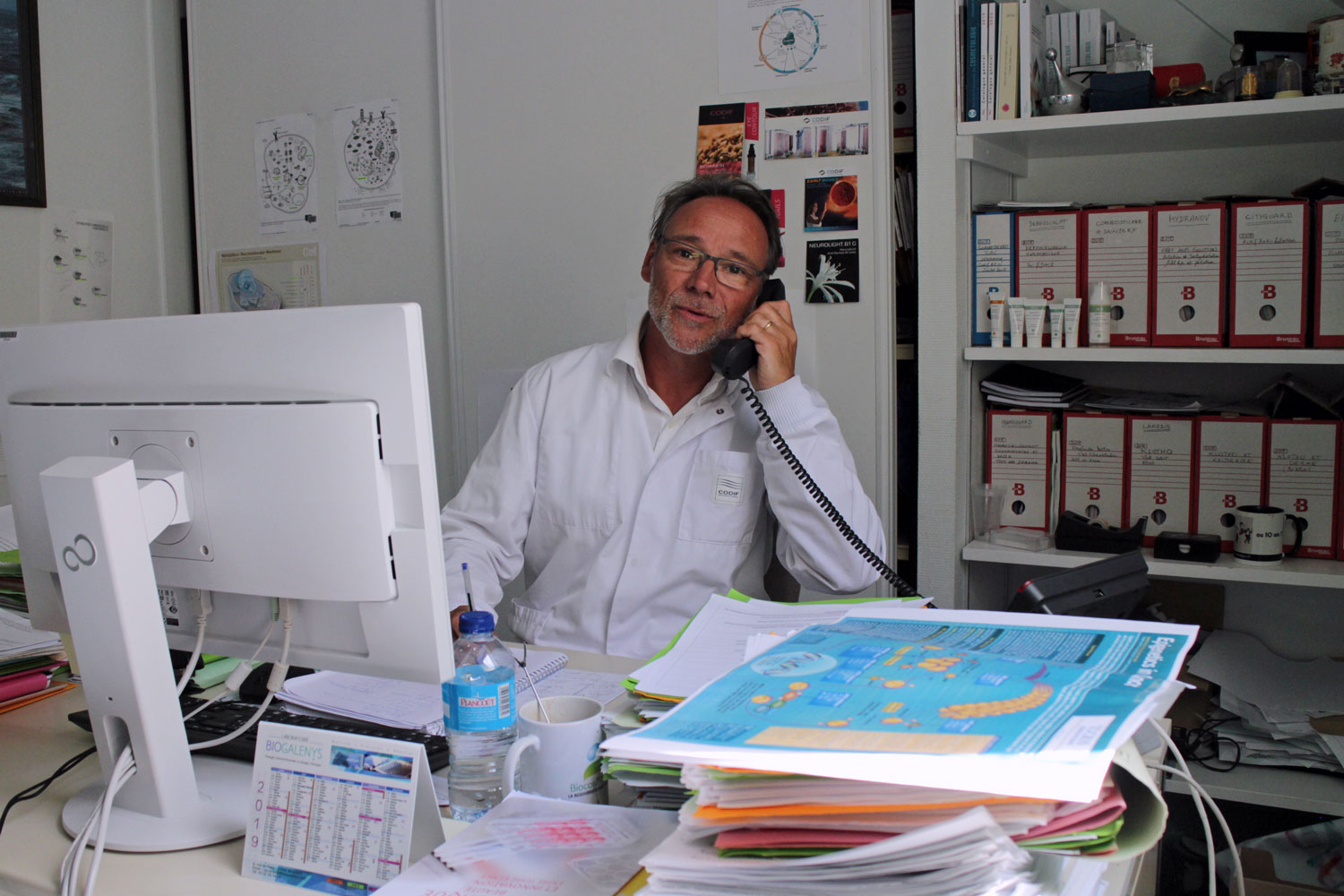This is a translation of my German blogpost Hinter den Beauty-Kulissen… ProTec Ingredia GmbH Proudly Presents: Woher Inspirationen für neue kosmetische Wirkstoffe kommen. Enjoy!
In cooperation with ProTec Ingredia // I’m on the phone with marine raw ingredients manufacturer Codif. “Romuald, how does your company develop ideas for new cosmetic ingredients?” I’m asking the co-founder, co-owner and scientific director of the Brittany-based company. Romuald Vallée doesn’t have to think long about his answer.
Inspired by nature
Romuald Vallée, co-founder, co-owner and scientific director of Codif: “Oh, we have so many different sources of inspiration! At Codif we love to observe nature, what’s happening around us in everyday life. I was on vacation in Corsica, for example, when I noticed this beautiful plant growing on the beach. There was something remarkable about it: the plant was only opening its blossoms when the sun wasn’t shining directly onto the petals – obviously a clever strategy to protect itself from too much UV radiation. I was fascinated and when I was back at the office I started researching the properties of the sand lily (pancratium maritimum). Now we’re cultivating these plants in greenhouses near our headquarters (the picture above shows a sand lily plant from our lab). The active ingredient we developed from the sand lily – we‘ve called it Neurolight – suppresses melanin synthesis in the skin to help reduce pigmentation disorders.
One time I was doing plant research and came across a type of phytoplankton (single cell algae) from the German island of Sylt. It looked interesting so we researched this plankton species in more detail. However, the extract we developed turned out to be much too dark in colour to be used as a cosmetic ingredient. We were focusing on reducing the colour pigments without losing any of the efficacy when we noticed an even more exciting effect: the phytoplankton reacted to the stress we exterted on it by secreting a gel substance. And these polysaccharides turned out to be highly antioxidant!
From the ingenious stress reaction of this plankton we developed our active marine ingredient group Exopolysaccharides (EPS). We were able to prove that the polysaccharides have an antioxidant effect on the skin; our skin cells react to oxidative stresses much the same as the plankton does (you can read more about the biomimetic effect of marine ingredients in this installment of the Beauty Soap). And speaking of skin cells: Pierre-Yves can tell you more about that; I’ll transfer your call to him! ”
Inspired by skin
Julia / Beautyjagd: “Hello Pierre-Yves, Romuald mentioned skin cells…”
Pierre-Yves Morvan, head of Research & Development at Codif: “Hi Julia. My office is right next to Romuald’s so I’ve heard bits and pieces of what you talked about. Yes, our research frequently leads us towards interesting raw ingredients – after all, we scientists tend to be curious and highly inquisitive . Although we work a lot with plants sometimes the inspiration comes from other sources. One time I was involved in an a project on skin cell research and together with an Italian researcher I discovered Aquaporin-8, a previously unknown protein inside the human skin. Aquaporines are like water conduits: not only do they channel water into the skin cells but they can also carry other substances, like moisturising glycerin. Aquaporin-8 is also responsible for transporting urea, a powerful moisture-binding substance which is important for skin health and elasticity. It improves the skin’s ability to retain hydration.”
Romuald calls over from his office (as he sometimes does, I was told ): “And who would have thought that right outside of our front door there‘s a plant that helps stimulate the development of Aquaporin-8 in the skin! ”
Pierre-Yves: “Romuald and I used to go jogging during our lunch break – we should probably do that again some time . As you know our office is right in the middle of a polder landscape. One day we were out running and noticed the European glasswort (salicornia herbacea), a salt marsh succulent which is growing everywhere along the coast line, especially in areas that are regularly flooded by the sea. We studied the plant in our lab and were surprised: glasswort uses a special mechanism to protect itself against moisture loss. This was the inspiration for our active oil ingredient Hydrasalinol which we manufacture from the glasswort plant. Hydrasalinol mimics the protective mechanism of the glasswort by stimulating the formation of Aquaporin-8 in the skin, boosting urea production. This innovative ingredient is especially good for very dry skin because it helps these skin types to retain moisture and elasticity.
Cultivating plants for inspiration
Julia: “If I may summarise: your investigative spirit plus a dose of intuition and the presence of the sea right outside the office is the key source of inspiration for Codif‘s new innovative raw ingredients… ”
Pierre-Yves: “That’s very nicely put ! Some of our raw ingredients were also inspired by innovations in plant cultivation. Eric Gasparatto – he is responsible for the development of active ingredients at Codif – used to work in a scientific institute prior to joining our company. Eric researched the coralline algae jania rubens for more than six years. However, cultivating this algae in its natural environment – the sea – takes way too long; jania rubens grow very slowly and they are also difficult to harvest. In his PhD thesis, Eric developed a different approach to cultivating this algae and we are now using his method at Codif: we put the coralline algae in our plant bio reactors and they really seem to like the environment. Now the algae are ready to be harvested after 2-3 months. Our ingredient Actiporine 8G is based on the jania rubens: it stimulates collagen synthesis and smoothes the skin’s surface. We like working with research institutes – right, Romuald?”
Inspiring partnerships
Romuald: “Yes, we follow the international research around anything to do with oceans and algae very closely. Often research institutes and smaller companies develop interesting innovations or new technologies! That’s also a reason why we visit many conferences and trade shows; we want to keep up to date with the scientific discourse. Sometimes there’s also an opportunity to work with these companies as partners. ”
What Codif’s marketing says…
My final telephone partner of the day is Gabrielle Moro, marketing manager at Codif.
Julia: “So the ideas for new raw ingredients come from your research and development department rather than the marketing division?”
Gabrielle Moro: “Yes indeed. By the time a consumer trend appears it is usually too late to start developing a suitable raw ingredient. It takes 3-4 years until a project actually leads to a new ingredient. For us it is much more important to follow current scientific trends and developments: we regularly meet up with our colleagues from the R&D department and discuss on-going projects and what our clients want. Sometimes I have to rein in Romuald’s and Pierre-Yves‘ scientific enthusiasm a bit – after all, our customers need to be able to understand an ingredient without being scientists .”
I can’t help smiling as Gabrielle says this last sentence – after all, I have just seen Romuald and Pierrre-Yves in action. Now I can’t wait to find out what Codif is doing with these ideas; how the company translates their inspiration into action. Spoiler alert: in the next chapter of the Beauty Soap things are turning purplish-pink and fluffy…





